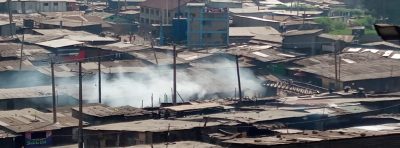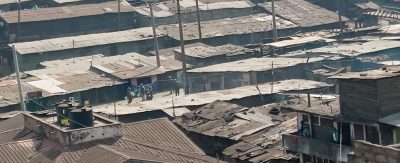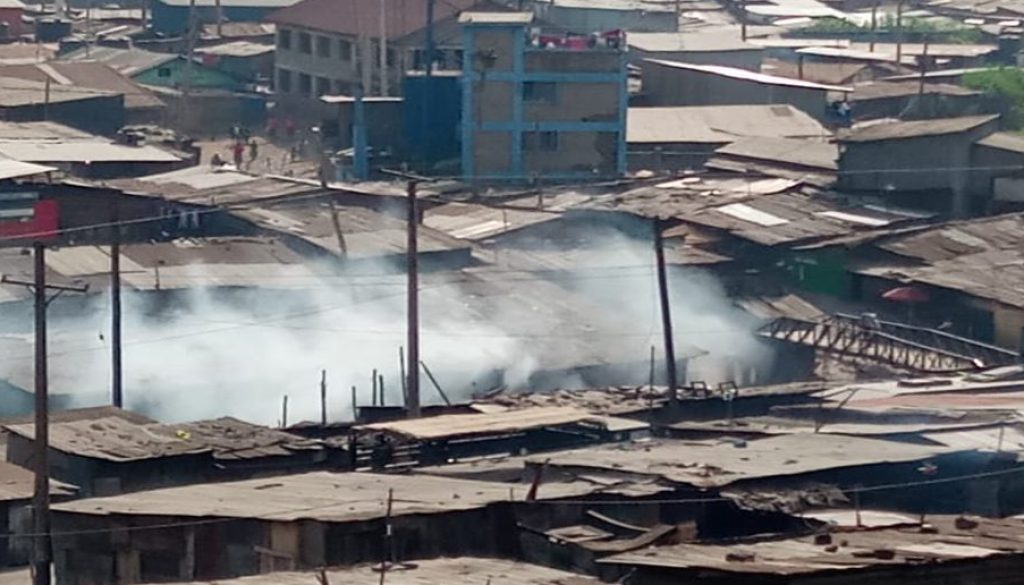Why does youthful and dynamic energy lead to crime in Mathare?
In this blog post Jacob Omondi explains issues leading to youth related crime and violence in the Mathare Valley area of Nairobi, and explores some solutions for helping youth find meaningful ways to stay away from crime and earn a living.
Mathare Valley is an informal settlement compromised of 13 villages, located approximately 9.1kms East of the Nairobi Central Business District. Within Mathare crime rates are higher on average, with Kiamutisya village in particular having a higher number of reported crimes compared to other villages in the area, owing to limited meaningful engaging opportunities leading to increased criminal activity.
Over the years, cases of violence have been continuously reported in Mlango Kubwa, associated with high rates of crime and poverty. A recent enumeration in Kiamutisya reported that 90% of the population in Mlango Kubwa Kiamutisya fall into the youth category (ages 15-24), and 70% are unemployed. With the outbreak of COVID-19, cases of youth related crime escalated. A high percentage of youth indulge in criminal activities including, snatching, mugging, robbery with violence and looting of properties, particularly during periods of protest. In one particular case, youth in Mathare barricaded Juja Road during a protest against the closure of the government youth project dubbed ‘Kazi Mtaani’, which was created to cushion youth within the pandemic period. The protests resulted to riots and mugging, with youths robbing motorists using the road.
According to Ghetto Foundation research on community-based activism, it is evident, young people (ages 15-24) are increasingly engaged in crime and violence. Reports consistently indicate increased rates of unemployment lead to increased crime. Reports indicate young people are also indulging in drug, use as a result of peer pressure and poor parenting.

Young people, especially young men, are identified as the main perpetrators of crime during peaceful protests. Such groups tend to take advantage of peaceful protests by stealing from residents and non-residents. Some young people also commit violent crimes, including stabbing residents while demanding their property. Crime and violence are among the key bottlenecks to growth, and increased cases of crime create a vicious cycle where young people struggling with the lack of economic opportunities turn to illegal activities to sustain themselves.
This poses the question: ‘Why does youthful and dynamic energy lead to crime in Mathare?
Additionally as the electioneering period approaches, politicians in Mathare are known to use young people as conduits to further fuel their interests, sparking increased cases of violence. Youths have been roundly condemned for taking part in crime in all past politically instigated electoral clashes. Youth are commonly bribed with as little as 500ksh to 1000ksh to intimidate political rivals, which leads to sprawling violence. Politicians should endeavor to create an enabling environment through the creation of job opportunities as they seek their political interests other than violence. In addition, those involved in fueling violence should not be allowed to seek any elective post.
Land is also a factor that spurs violence within Mathare. In cities and towns, access to land is a pressing concern for all residents. In the context of urban growth and inequality competition for land for development often result in conflicts, which often turn violent and affect residents. Such conflicts are common, and actors involved target youth who emerge as the main perpetrators of crime and violence during the land contestations.
Drug use emerges as another cause of crime and violence in Mlango Kubwa. A recent study by the United Nations Office on Drugs and Crime shows that “As pertains to drug and alcohol use, respondents reported that the most used substances in Mlango Kubwa are mainly alcohol, illicit brew, and marijuana. Respondents also highlighted that other drugs such as heroin, cocaine, and phenobarbital use have increased over the years. Those most vulnerable in the community are children and youth due to the normalization of drug and alcohol use the result of which is drug use from a young age”.

In order to support their drug use, young people often resort to criminal activities and violence. Finding practical ways to address the prevalence of drugs among the youth remains critical. The Government should aim to work closely with community members to identify those in the drug business and crack down on the illicit brew hubs in the area. Drug prevention programs should additionally address all forms of drug use including the underage use of illegal drugs.
Providing young people with meaningful engagement opportunities is the foundation of most efforts to tackle youth crime and violence. However, lack of proper planning and resources has resulted in a shortage of social spaces where young people can grow and nurture their skills and talent. Nurturing young people’s talent acts as a meaningful way to address social crime as this provides young people the ability to earn income independently.
Over time, there have been growing numbers of young people being gunned down through extrajudicial execution by police. The law does not allow state officers or anyone to take matters into their own hands. Article 26 of the Kenyan constitution states that, “every person has the right to life, a person shall not be deprived of life intentionally, except to the extent authorized by the constitution or other written law”. Increased cases of young people being killed by the police has been met with little or no action. Only those cases that break through into the public consciousness are given attention. There is a need for reforms in the criminal justice system, particularly in this area.
Prisons are playing a lesser role as correctional facilities. Young men and women released from correctional facilities receive minimal preparation and inadequate assistance and support, which makes their re-entry into communities challenging. The prison department must be equipped with mentors who will guide the inmates on the importance of living a good life.
The Safe and Inclusive Cities project through Muungano Wa Wanavijiji has been a great help and support to the young people of Mathare. Through the program, young people are taken through two modules, which touch on safety within the community and decent work as a means of economically empowering youth. Through the program’s safety component, youth engage collectively to devise efficient ways to address crime within their communities while the decent work component focuses beneficial and sustainable ways for young people to make a decent living for themselves.
